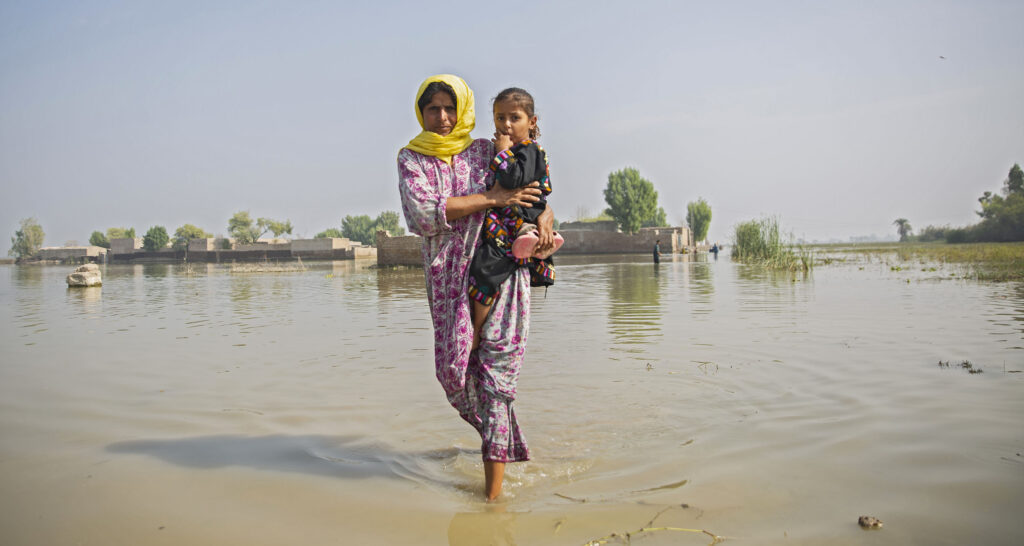Surviving weather in a 1.5°C world
As temperatures creep higher, extreme weather events are becoming the new normal. What should we expect as we approach 1.5°C, and how can governments and wider society prepare?
Climate — Global

For the weather and climate community, 2023 is a very unusual year. It started in March when ocean surface temperatures started warming up to levels never seen before, and by a big margin. Temperatures over land soon followed. July was the hottest month ever recorded. Then we saw the hottest August and September ever recorded. Regionally, this meant heatwaves and forest fires, but also record wind speeds due to the heat fueling super-powered tropical cyclones. The warmer the atmosphere is, the more water it can hold, and so more heat also means more rainfall. Sometimes, such as in Australia in 2022, this means drought and forest fires can be quickly followed by flooding.
These events are unusual, even unprecedented, but not unexpected. In 1998, governments came together in Paris and agreed to limit dangerous climate change and keep global temperature increases well below 2°C, preferably below 1.5°C. These are increases compared with before when humans had a strong influence on climate, a baseline usually taken to be the average over the years 1850 to 1900. The global mean temperature increase between then and 2023 is approximately 1.3°C. This number and the 1.5°C level do not refer to a single month or year, but to a long climate average of 20 years or longer, which evens out the natural, interannual variability of temperatures.
It is very likely that 2023 will be the warmest year on record and 2024 is likely to be an extremely warm year as well, potentially beating 2023. It is almost inevitable that we will reach 1.5°C, probably within about a decade. The World Meteorological Organization put out a report in May stating that there is a 66% chance that at least one year in the next five will be warmer than 1.5°C. This will not mean we have reached 1.5°C in the long-term average, but it is a warning that we are getting close. In a 1.5°C world, we should expect more of the unusual weather of 2023, which will, of course, no longer be unusual.
What can we expect?
Changes in weather will not be uniform across the globe. Land warms faster than the ocean and land at high latitudes in the northern hemisphere warms the fastest. It is not just the mean temperature that changes. The intensity, frequency, and duration of heatwaves also increase. Regions such as the Mediterranean, Southwestern USA, northeast Brazil and southern Africa are more prone to drought than other regions and this may change life and agriculture there. Rainfall will decrease in some regions but will increase in more regions. When the mean increases, so does the amount of heavy precipitation.
An increase in the mean can also mean that the number of days with rainfall decreases, but that the rainfall is more intense when it does occur. We may experience fewer storms, but when they occur they will be stronger than before and carry more water, which is often the most damaging aspect after the high winds have abated.
Many more people will be impacted by extreme weather than have been in the past. Nature and the services it provides to humans will also be affected. Many land and ocean ecosystems have already changed and the services they provide to humans have reduced. Heat-stressed forests sequester less carbon, while wetlands that used to buffer against floods may not be sufficient as rainfall amounts increase.
Solutions not blockers
It is worth doing as much as possible to limit climate change. Every tenth of a degree of warming stopped is a reduction in extreme and dangerous weather. The Intergovernmental Panel on Climate Change published a report showing that there is a clear difference between a global warming of 1.5°C and one of 2°C. Heatwaves are avoided, heavy precipitation reduced, droughts lessened. Fewer species become extinct and ecosystems we rely on for our survival are impacted less. Compound impacts, where multiple hazards happen at once (heat and drought; wind and rain) have a larger impact on water, food, and energy systems than when acting alone, and these compound impacts are less likely in a cooler climate.
The only solution with guaranteed results is to cut greenhouse gases (GHGs), but progress on this front is hampered by political inertia and vested business interests (often in collusion). Solar radiation management, also known as geoengineering, involves technological solutions to reduce the incoming heat to the Earth. It is not a solution on its own, but best used as a supplement to strong reductions in GHG emissions. There is a danger of unintended consequences (such as changes in rainfall patterns affecting food production), and it is best implemented with global agreement, which could be difficult in today’s political situation of increasing regionalization.
The severity of the impact of a tropical cyclone in a particular country can be predicted by that country’s gross domestic product and the quality of its institutions. Corruption, low capacity, and lack of experience all contribute to reducing the efficiency of rescue and restoration operations. If there is time to prepare for an extreme event, the rescue effort is better and less costly. In 2022, Pakistan was hit by extreme rainfall, leading to widespread flooding and thousands of deaths. In hindsight, this event could have been predicted weeks in advance. Early warning would have given the local authorities a chance to buy in supplies, make evacuation plans, and ask for help from aid agencies in advance of the event. The World Meteorological Organization is building an early warning system called Early Warnings for All, which will use weather forecasts with the aim of protecting everyone on Earth.
There is also potential for machine learning to play an important role in building resilience in society to the shocks from weather extremes. It is a useful tool for planning, routing, and scheduling, which would help manage climate migration. In the future, migration could involve the movement of hundreds of millions of people, as living in a region becomes economically unviable or even directly dangerous. Machine learning may be able to enhance existing extreme weather warnings by increasing resolution and quantifying uncertainty. It can also be used to accelerate research and speed up climate models. It may help us better understand compound risks. For example, we need to know which chain of events might lead to crop failures across the world and how we can reduce the chance of this happening.
Building resilience to extreme weather
Climate change information is often presented as changes in average temperature and average rainfall, but that masks the large changes in extreme events such as storms, droughts, and floods that accompany a shift in the climate. We already have many of the technologies we need to reduce the impacts of extreme weather, but they need to be supported and scaled up.
Economic efficiency has lifted millions of people out of poverty. But a lack of resilience, including against climate-change-induced extreme weather events that cost USD 140 billion a year, risks undoing the economic and societal gains made in recent years. We must not let that happen, whatever headline average temperature rise we reach.





